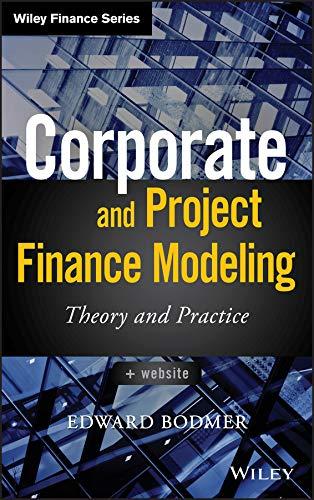


BJ was forecasting expansion of sales in the Midwest and Western parts of the country. To accommodate the forecast growth, it was planning on investing $2.4m over the next 18 months, of which $2m will be spent in 2019 and the remaining amount in 2020. It was anticipated this investment would fulfill the company's need for facilities for several years. Construction of a new warehouse in the MidWest was expected to be completed in early 2020. BJ's accountant forecast total depreciation expense of $213,000 and $333,000 for 2019 and 2020, respectively. Management anticipates that inventories will be the same proportional relationship to sales that it had in 2018 despite disruptions due to adding the new plant. Operating margins were expected to be consistent with past experience (and the temporary drop in inventory would not affect the cost of goods as a percentage of sales). The company expects a future effective tax rate of 35% due to recent changes in the tax law. Mr. Bones expected BJ's dividend payout to increase to 25% of net income in the foreseeable future. Mr. Bones was forecasting sales growth at 30% in 2019, but falling to 20% the following year (2020). He was concerned what that might mean for the level of bank financing needed and set about to forecast the income statement and balance sheet for the firm over the next two years. Unless otherwise noted, he was going to assume the most recent years' operating ratios would prevail in the future. He had a few questions he wanted to answer before going to the bank: How had BJ performed over the last few years? Was the Bank going to be happy with BJ's performance? How much external financing does Bioject need to grow at the forecast rate? What would happen if growth was only 20% in the next year but grew at the forecast rates in subsequent years? Bioject: Part 2 - Valuation Suppose BJ believes it will reach maturity at the end of 2020. Thereafter, cash flow growth is expected to average 4% and COGS is expected to level off at 55% of sales; SG&A is estimated to be 22% of sales. With mature growth, CapX and depreciation of $350,000 is forecast in all years starting in 2021 and thereafter. Since growth will be at steady state, no additions to working capital are forecast beyond 2020. BJ believes all forecast cash is operational, and not surplus. How much is BJ worth as a firm given this forecast? They estimate their WACC at 9%. If BioJect has a 2,250 million shares of equity outstanding and plans to maintain a permanent debt level of $850,000 for purposes of valuation, what is the value of their equity on a per share basis? Question 1: What is your forecast of Bioject's external funds needed in 2019 and 2020? Show work below and make sure to identify all key inputs/assumptions to develop your forecast. You need only include a first pass forecast (ie no modeling of any financing feedback is needed) Input / Assumption Area: 2018 2019 2020 2021 2019 2020 2021 4% External Funds Needed: $350 Do you think they can raise the funds to grow at the forecast rate? Do you think they will be able to pay it back? Explain. Sales growth n/a 30% 20% COGS SG&A Depreciation $213 $213 $333 Tax rate Note - these #'s are to show you what is Dividend payout rate (Div/NI) meant by using case Information to populate Cash the input area. Use the case information in the Accounts receivable worksheet BJ_Overview to populate the Inventories the rest of the needed numbers. Inventories/Sales Capital Expenditures (Capex) 2,000 400 Accts Payable Accruals 350 What happens to the EFN if growth is at the lower rate of 20% in the first year, with remaining years at forecast rates? How does that affect their external financing need? Actual 2018 Forecast: 2019 For years ending 12/31 2020 2021 $23,505 13,612 9,893 7,471 213 INCOME STATEMENT Net sales Cost of sales Gross profit SG&A Depreciation Net interest expense Pre-tax operating income Income taxes Net income Dividends Additions to Retained Earnings 94 2,115 925 $1,190 $240 $950 BALANCE SHEET Assets Cash Accounts receivable Inventories Total current assets $706 3,652 2,190 6,548 6,563 6,163 1,941 6,913 2,624 2,274 Gross plant & equipment Accumulated depreciation Net plant & equipment Total assets 4,163 1,728 2,435 $8,983 $125 $125 $125 LIABILITIES Current maturities of long-term debt Accounts payable Accrued expenses Total current liabilities Long-term debt $125 1,440 1,653 3,218 875 $750 $625 $500 Common stock Retained earnings Total shareholders' equity Total liabilities 1,135 3,880 5,015 $9,108 External Funds Needed









